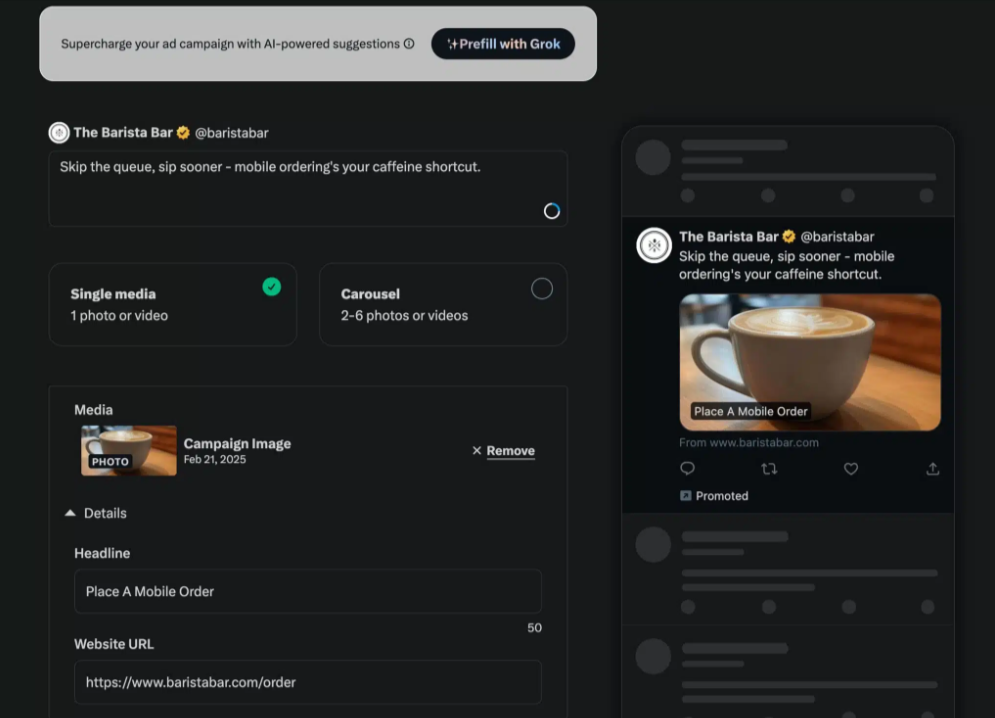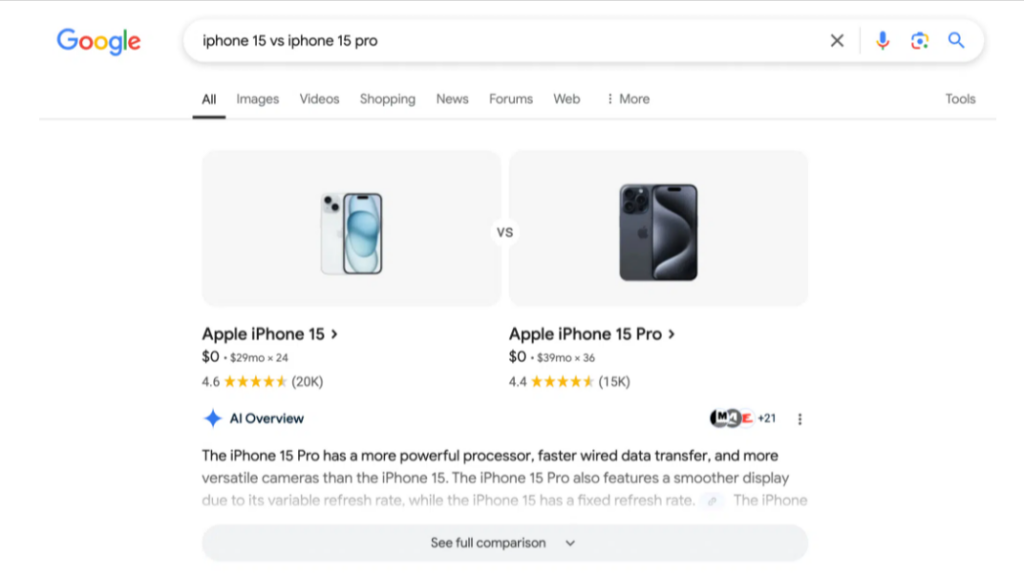eCommerce Express Digest - March 2025
3 March 2025 Blog Posts

2025 is shaping up to be a big year for innovation in Search—at least, according to Google CEO Sundar Pichai. February came in hot with a wave of AI and advertising updates, hinting at some major shifts ahead for how we search, shop, and market online. From smarter ad tools to AI-driven search experiences, here’s a quick wrap of the key changes and what they could mean for marketers and brands moving forward.
New AI Ad Tools
X, formally “Twitter” is making campaign optimisation effortless with Analyze Campaign with Grok, a smart tool that turns your ad performance data into clear, actionable insights in seconds. Once you’re ready to launch again, Prefill with Grok lets you create ad copy, visuals, and CTAs just by entering your website URL. It’s all part of X’s move to make advertising smarter and faster for brands and SMBs alike, powered by the brains of Grok.

Google is internally testing a new “AI Mode” in Search, aimed at handling open-ended or exploratory queries such as advice, comparisons, and multi-step questions. Powered by a custom version of Gemini 2.0, it presents organised, conversational answers in a full-screen UI, with follow-up prompts and links to dig deeper. While it promises a more intuitive search experience, publishers and marketers are concerned it could further reduce website click-through rates, an issue already seen with existing AI Overviews.
On the Google stuff
Google has a bunch of new updates in its version 19 of Google Ads API. If you use Google Ads API for your own internal software, you should go through the changes to see how these updates can benefit your internal software. Key changes include the automatic generation of enhanced video assets for Performance Max campaigns, removal of legacy feed-related entities in favour of asset-based approaches, and expanded support for portrait image assets in Demand Gen ads. Google says that these updates enable developers and software providers to streamline campaign management, implement brand consistency, and explore richer ad formats, ultimately boosting campaign effectiveness across platforms.
Google Ads has introduced a new feature in Tag Manager that simplifies conversion tracking by enabling codeless setup for lead form submissions. This update allows advertisers to track conversions without needing to write manual code, using a user-friendly interface that supports flexible form tracking and multiple URL matching options. Aimed at reducing technical barriers, the feature streamlines campaign setup, making conversion tracking more accessible for marketers with limited development resources. Ultimately, this update simplifies advertiser workflows by removing technical hurdles from the conversion tracking process.
![]()
Image Source: https://x.com/DavidGQuaid/status/1886962788196868107
Google AI Overview updates are live
If you search something like “iPhone 15 vs iPhone 15 Pro”, Google now shows an AI Overview summary box comparing the two. When you click “see full comparison”, it expands into a detailed breakdown of specs, features, and differences. It’s part of Google’s experiment to integrate product comparisons directly into AI Overviews.

The experimental update could impact both organic content creators and advertisers, marking a significant expansion of Google’s AI capabilities in shopping-related queries. However, a report found that Google’s AI Overviews are contributing to record-low organic and paid click-through rates, though brands featured within these overviews are experiencing increased visibility and engagement.
Final comments
As AI continues to reshape how we search, shop, and advertise, staying agile is more important than ever. Whether it’s smarter ad creation tools, evolving SEO and search behaviours, or simplified tracking solutions, the landscape is shifting fast—and the brands that win will be the ones who adapt just as quickly. We’ll keep watching how these updates roll out in real time and what they mean for eCommerce marketers looking to stay ahead.





